My personal fine-dining restaurant highlights in Taiwan
3 of the many great gourmet dining spots in the Republic of China (ROC), the country’s official name:
This last post of my Taiwan mini-series (planning, one-week and two-week itinerary, favorite luxury hotels) goes into my fine-dining restaurant highlights. On a 17-day trip through beautiful Taiwan, my husband and I tried to dine at good gourmet dining spots whenever possible. While it was no problem finding such places in the island’s big cities, this was a bit different in the countryside. Yet we managed to get more than decent dinners in Taiwan in most cases. As a matter of fact, we only had one meal that we would have preferred to do without. But anyway, that is not the topic here. It is about my three favorite fine-dining restaurants in Taiwan.
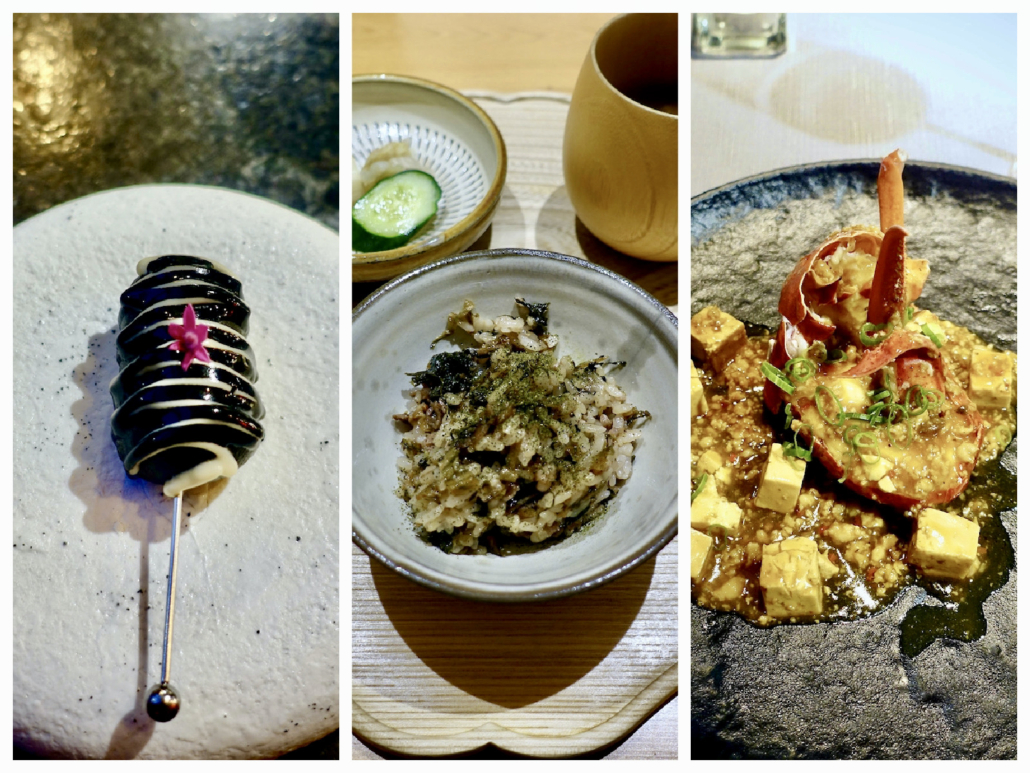
Before jumping on the places in question, let us have a short look at foodie restaurants in Taiwan in general.
(Michelin) fine-dining restaurant scene in Taiwan
What Michelin and The World’s 50 Best Restaurants think
Taiwan is continuously making an impact on Asia’s fine-dining scene. Since the inaugural Michelin Guide Taipei in 2018, three more cities were added, Kaohsiung, Tainan and Taichung. In the Michelin’s last Taiwan edition (August 2023), 341 restaurants were included. 3 got three stars (Le Palais Taipei, Taïrroir Taipei and JL Studio Taichung), 6 two stars (Molino de Urdániz, Mudan, Logy, L’Atelier de Joël Robuchon and RAW, all in Taipei, and Liberté in Kaohsiung) and 34 one star. This is quite an impressive performance record, I think!
Also The World’s 50 Best Restaurants list covers Taiwan. 50Best Discovery shows 19 results when doing a search. 13 are in Taipei, 2 in Taichung and 3 in Kaoshiung. All three Michelin three-star establishments are included.
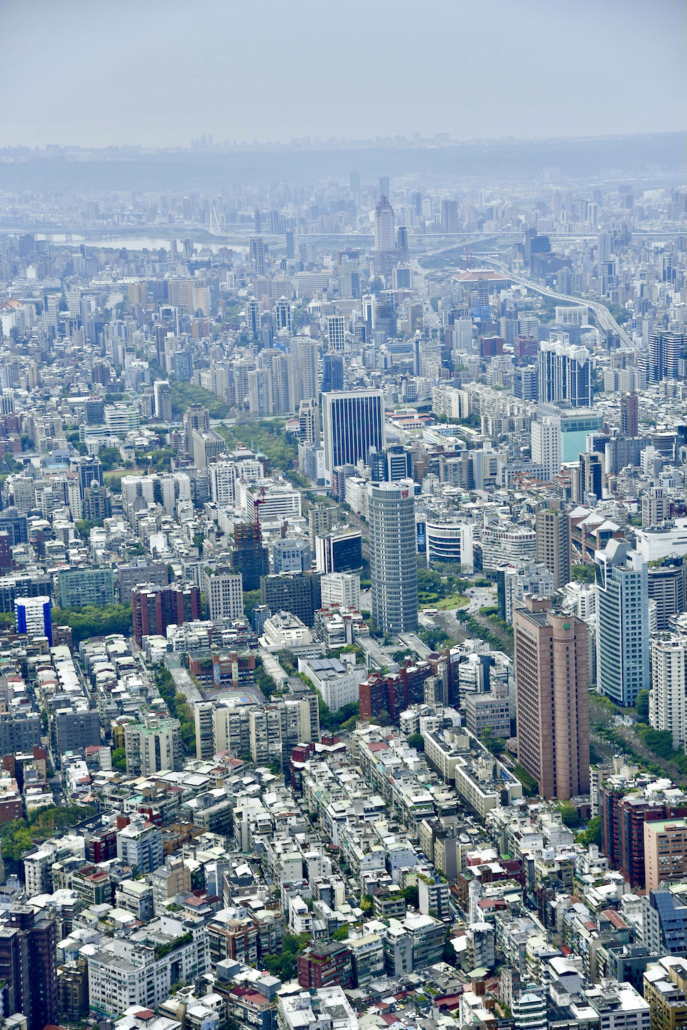
Our choice of fine-dining restaurants in Taiwan
As to our restaurant selection in Taiwan, it was no easy thing to do. First of all, the hottest tables are gone the minute they are open for online reservation (usually made via “inline”). And many among those are also quite expensive. Plus, some only accept bookings by phone. Then, it is sometimes difficult to find English information about certain places online. Not all have websites in English. And if they have, they make it not easy for you to find out where to click for the English version. Furthermore, restaurants are often very specific when it comes to making a reservation. They ask for several things, and you have to pay an amount or the whole meal in advance.
Despite all the difficulties we faced in the reservation process, we managed to find some really good spots. When doing so, we focused on more affordable places, i.e. such ones not asking for much more than 4,000 TWA (111 SFR/US$) for the tasting menu. After all, we had 17 nights to eat out. Except in one case – where we opted for the Signature Wagyu Menu with a Sirloin steak as main course – , we succeeded.
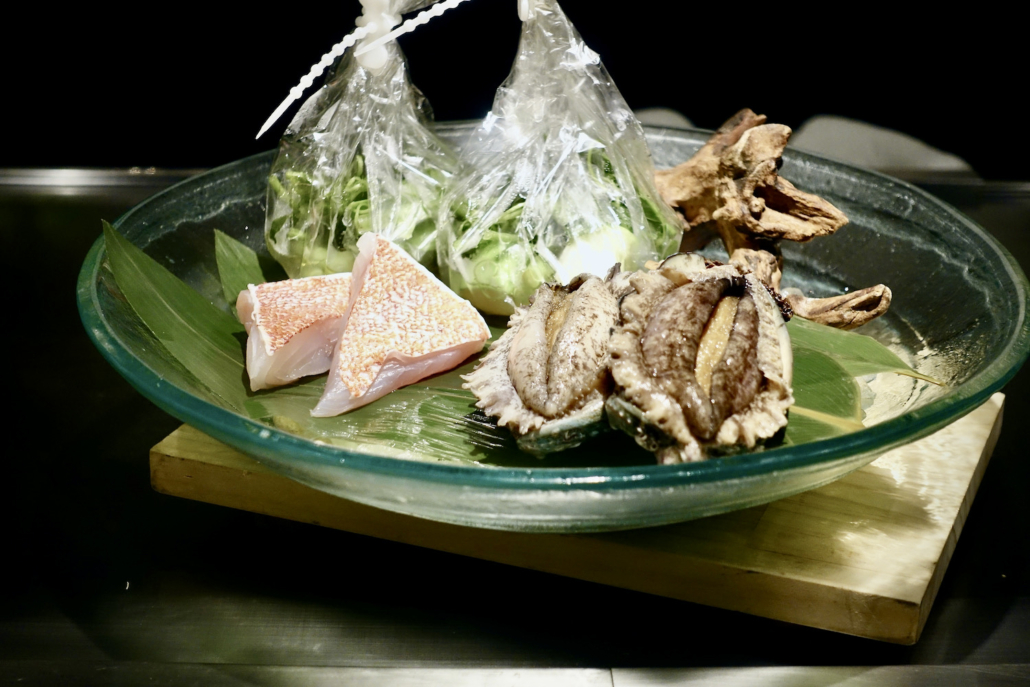
My top 3 fine-dining restaurants in Taiwan
In contrast to my luxury hotel highlights (my post) in Taiwan that I did not list in descending order, I made a ranking for my favorite fine-dining restaurants on this island. After lots of thinking, I have chosen my best thee among 13 places. While my number one was clear from the beginning, number two and three were not so easy to determine. Here is my classification of my personal fine-dining restaurant highlights in Taiwan. Two of them are Michelin listed, from which one even holds a Michelin star. The third is a second restaurant from a three-star Michelin chef on the island.
In this context, I have to add that we dined at one more one-star Michelin spot. And this was the one I have elected as my actual number two of best restaurant experiences in Taiwan. It is about Restaurant Holt in Taipei whose chef (Jeffery Downs) had left for Canada even before our visit.
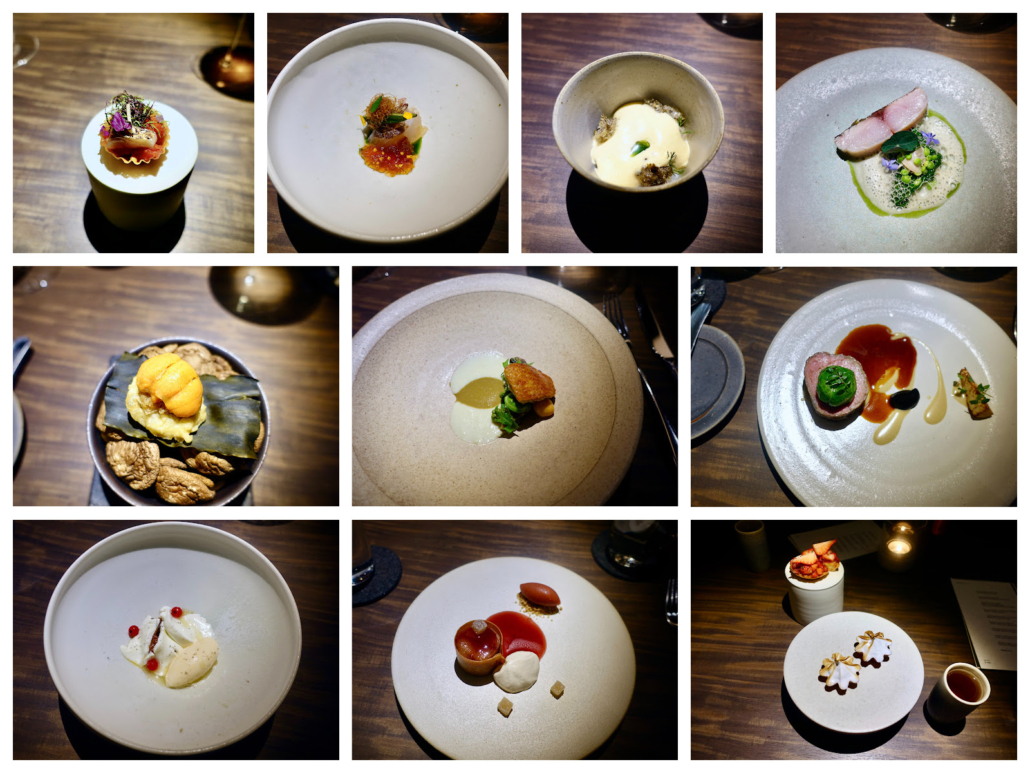
While they were still serving his creations on our visit, we were told that there would be a rebranding process. And I have just noticed that their website is no longer available. So, I had to rearrange my ranking with a new number two and three. But first to my undisputed number one.
1. Restaurant Marc L³ Kaohsiung
About
According to 50Best Discovery, “reservations here are like gold dust”. I well noticed that when checking out the booking process at Marc L³. So, I bookmarked the exact time when to do the reservation online. And I was successful. Then we were given a short time window to make the full payment of the meal. But instead with credit card, they asked for a bank transfer. This was a no-go option for us (short payment deadline and high fees). Finally, the matter was settled when we involved our hotel concierge (Silks Club, many thanks!). You see, scoring a reservation at one of the hottest tables in Taiwan is no walk in the park!
After this overlong elaboration how to reserve one of the hottest tables in south Taiwan – sorry for this – , now to the place itself. Chef Marc Liao has been in fine dining for twenty years, also abroad for ten something years. In 2019, the Taipei born chef settled town in Kaohsiung. Here he joined Liberté, a two-star Michelin restaurant, before opening his own place in 2021. At Marc L³ – the three L’s stand for Live x Liberal x Limitless – , he serves contemporary cuisine in a casual setting. Marc L³ is listed at Michelin and at 50Best Discovery (The World’s 50 Best Restaurants).
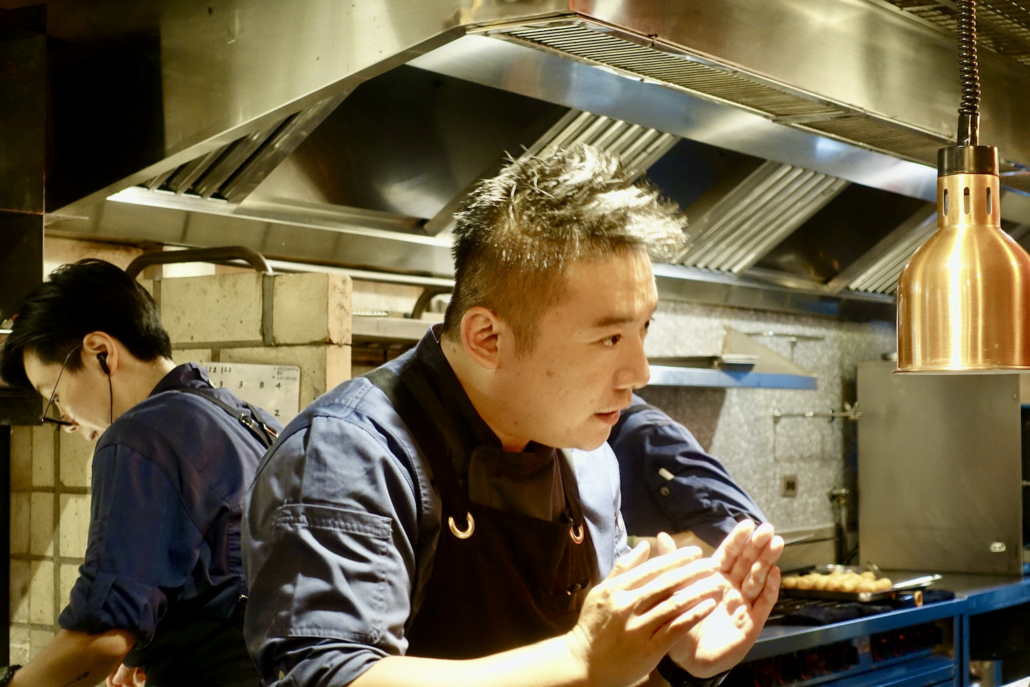
What to expect?
Marc L³ is set in a quiet street in Kaohsiung’s Qianjin District. The spot is small, guests are seated either at the counter on the ground level (nine seats) or upstairs where you find three more tables. There is a cool vibe in here. This shows not only in the decor but also in the staff’s attitude. Marc Liao and three chefs (all women) were at work on our evening and one maître d`along with two servers.
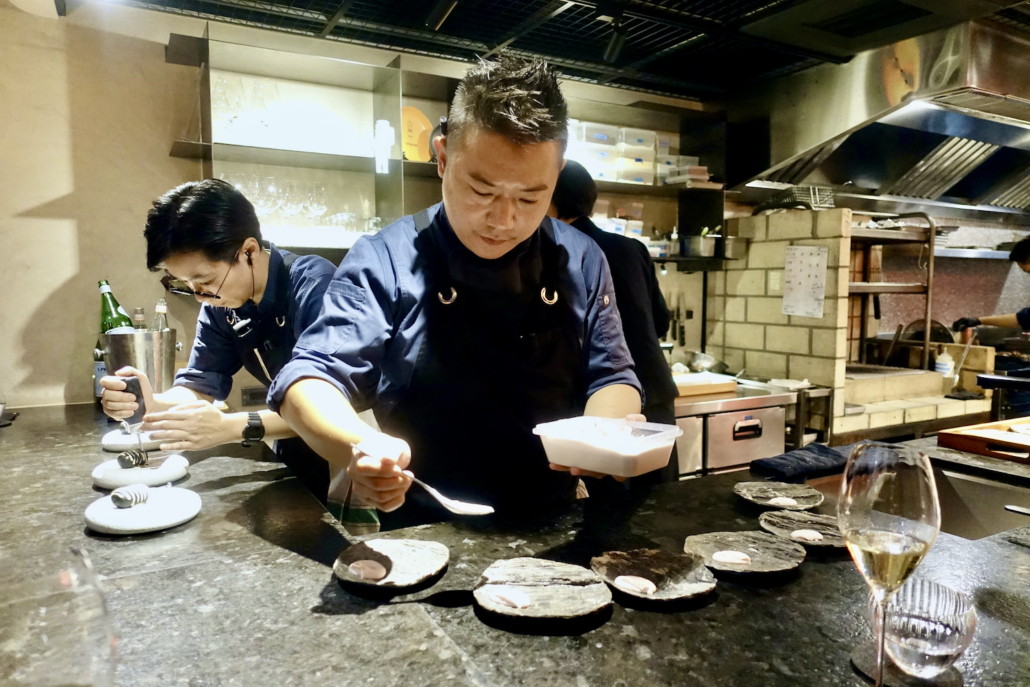
Food wise, you are in for excellent modern European cuisine that is served without chichi. He does this by combining diverse cooking styles and techniques, which results in truly memorable creations. On offer is a sole eight-course menu. It is reasonably priced at 3,600 TWA (100 SFR/US$). According to the chef’s Instagram feed, he plans to open a new chapter where he aims at upleveling. This in order to get closer to the restaurant experience that he carries in his heart. Let us see what he has in mind. I already found that he brilliantly performed on our evening.
How was it dining at Marc L³, my favorite among visited fine-dining restaurants in Taiwan?
Upon arrival, two employees stood ready in front of the chic remodeled townhouse to greet us by name.
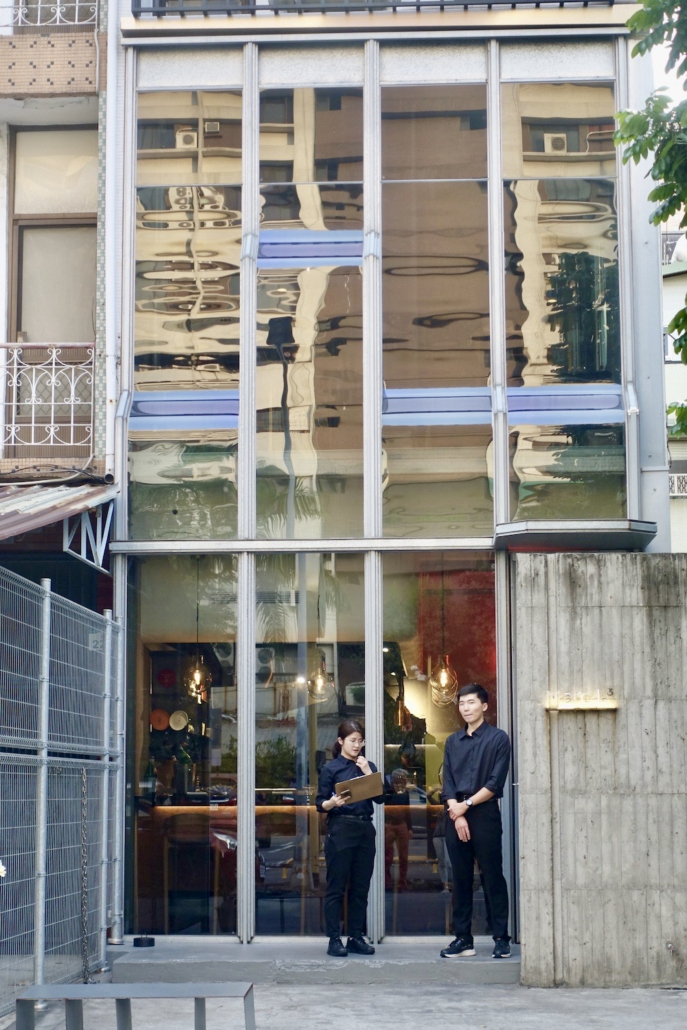
No wonder, we were the only Westerners dining here at this night. Once inside, the chef welcomed us too and chatted with us for quite some time. Besides being an outstanding chef – see below – , Marc Liao is a really nice person too! We were seated at the counter – we had not expected this – and were able to watch what was going on in the kitchen – and that was informative and entertaining at the same time!
In terms of food, dining at Marc L³ was one hell of an experience! We were served a delightfully balanced series of inventive dishes (12 of them) that surprised at every bite. The dinner included the chef’s playful take on a hotdog, filled with fish and squid. It came with two sauces, one ginger-onion, the other garlic-béchamel. And there was a black exterior that consisted of chicken broth with black truffle and squid ink.
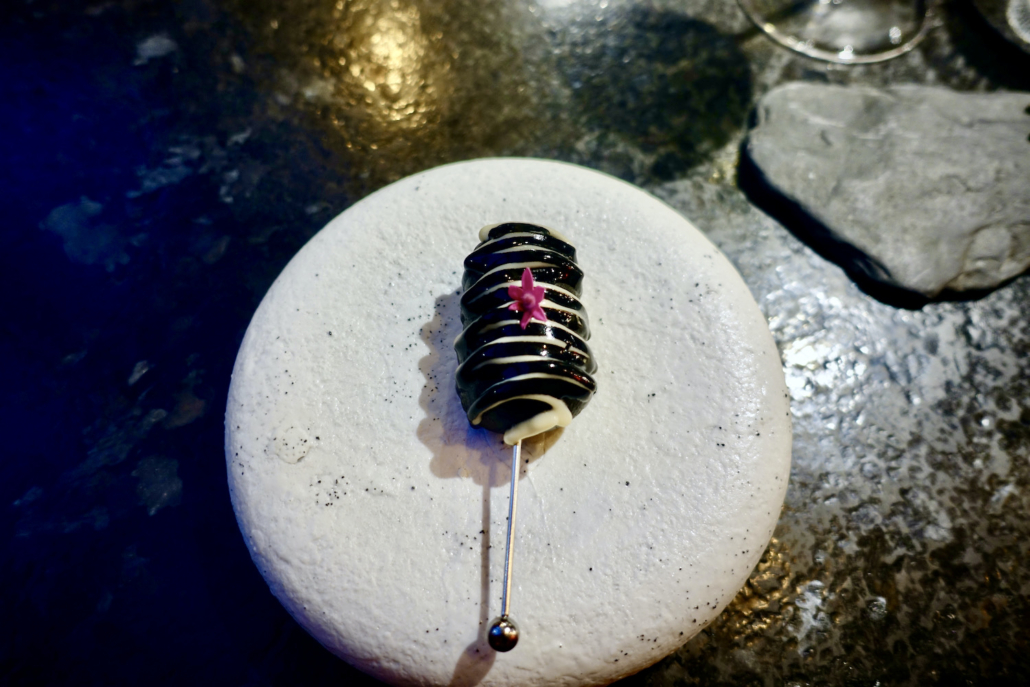
The meat dish was A5 Wagyu shoulder paired with Anna potatoes and kohlrabi. Three sweet dishes put the final point, a rice pudding with chocolate crunch, the chef’s version of an apple pie and a donut with custard, lime and pistachio. We loved every minute of our dinner at Marc L³. It was a a big deal, both from the culinary aspect and the pleasantly relaxed ambiance we encountered here!
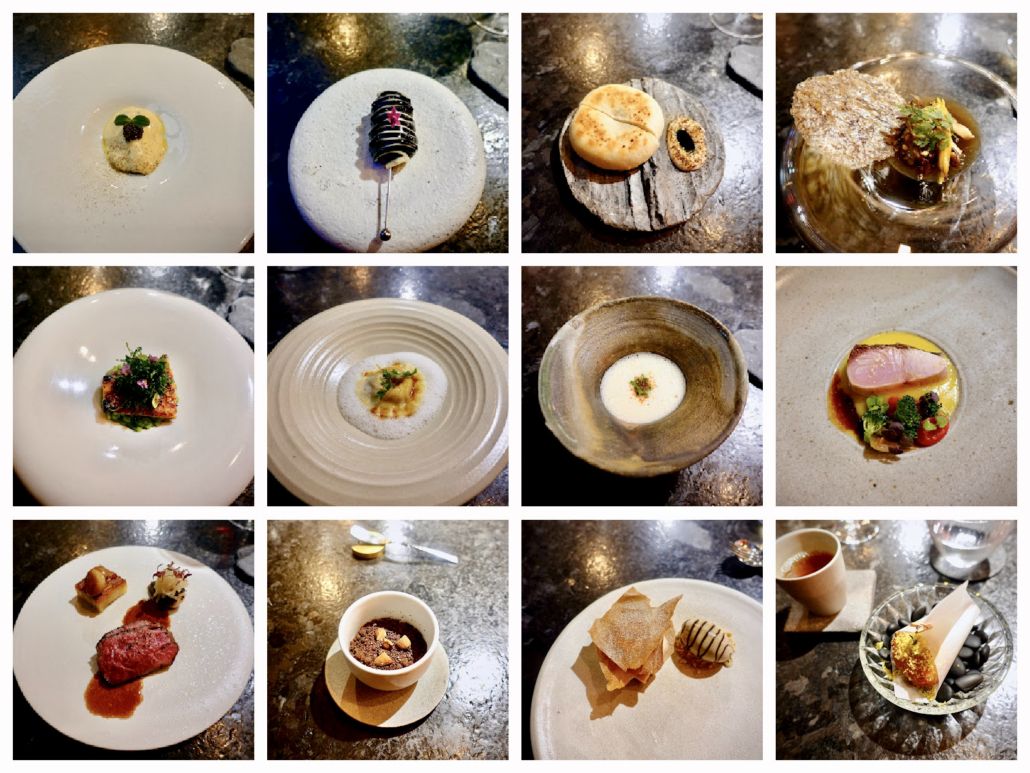
2. Restaurant Sho Kaohsiung, my second favorite of 13 fine-dining restaurants visited in Taiwan
About
Sho is an offshoot of the well-known Restaurant Den in Tokyo. This two-star Michelin spot under the lead of Zaiyu Hasegawa has reinvented kaiseki, an elaborate celebration meal. Chef Fujimoto Shoichi from Kyushu/Japan, who had worked five years in Tokyo, was sent to Kaohsiung in 2020. This in order to spread Den’s concept, adapted to its surroundings. And he does this in the fashionable Qianjin District. The chef, who started his professional career in a car repair shop, is now in charge at a state-of-the-art open kitchen. Here, surrounded by lots of staff, he works his magic. While the ambiance at Sho is a bit clinical (lots of white), it is far from being stiff. The dining spot has a Michelin star and is listed at 50Best Discovery (The World’s 50 Best Restaurants).
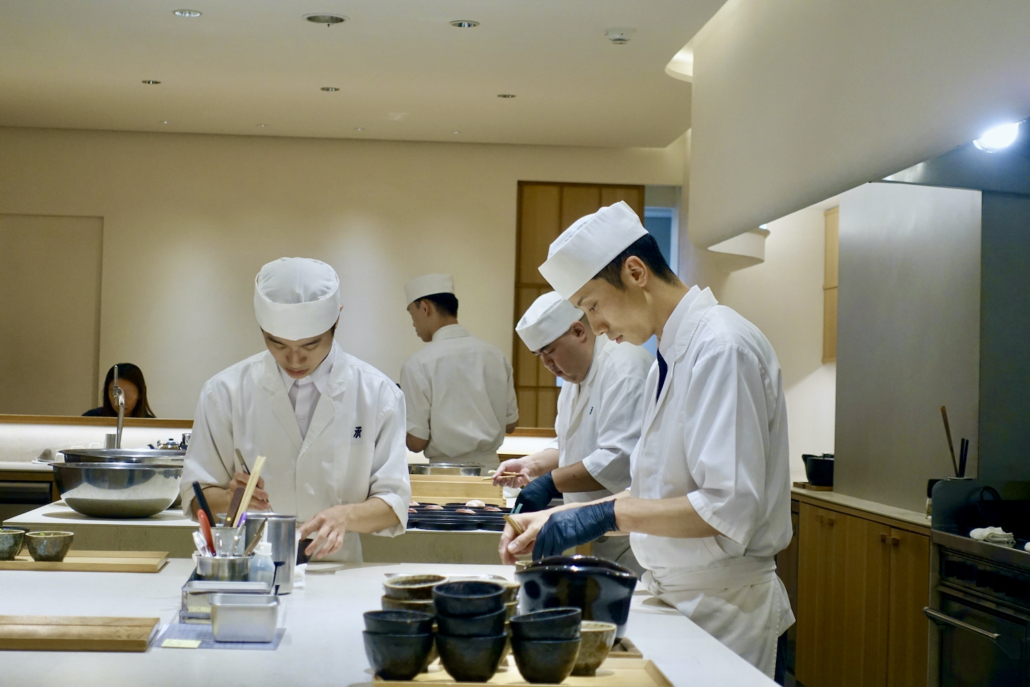
What to expect at Sho Kaohsiung?
You are in at Sho for a typical Japanese meal. That already shows from the spot’s exteriors. It is all about minimalism, there is lots of wood and you find here common Japanese plantings.
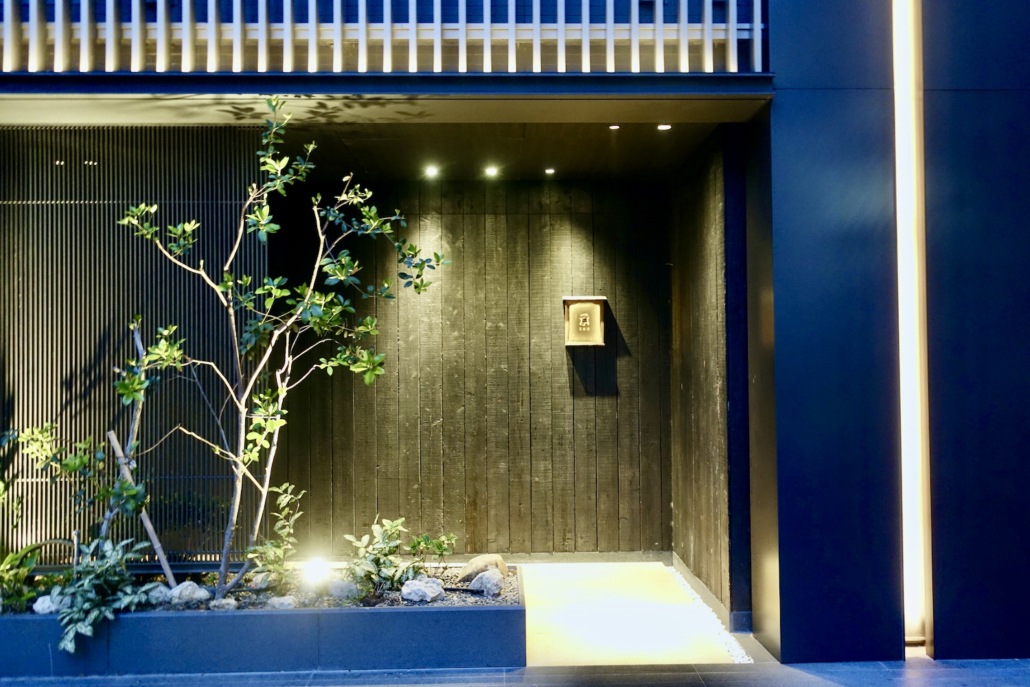
This finds a continuation in the restaurant interiors. The eyes are immediately drawn to a huge counter where about 14 guests can seat. In addition, there are two private rooms for about 6 to 8 each guests each. Everything is kept in white and light colored wood. The staff is also in white, complete with shirt, jacket and cap. Only the chef wears a black tie.
On offer is a sole tasting menu costing 3,500 TWA (96 SFR/US$) and comprised of ten courses. This is the case when you had opted for the so-called rice upgrade on the booking. This is about one of the signature dishes that the chef brought with him from Restaurant Den in Tokyo. It is kamameshi, a traditional rice dish cooked in an iron pot called kama. We got it once with Wagyu
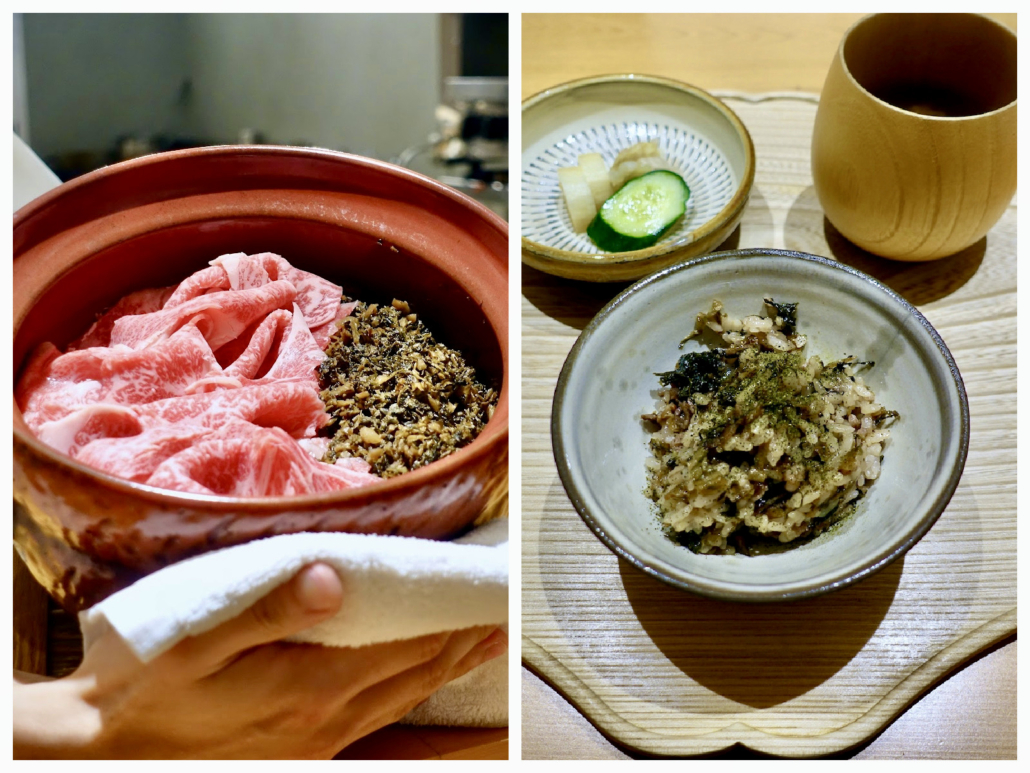
and the other time with scallop.
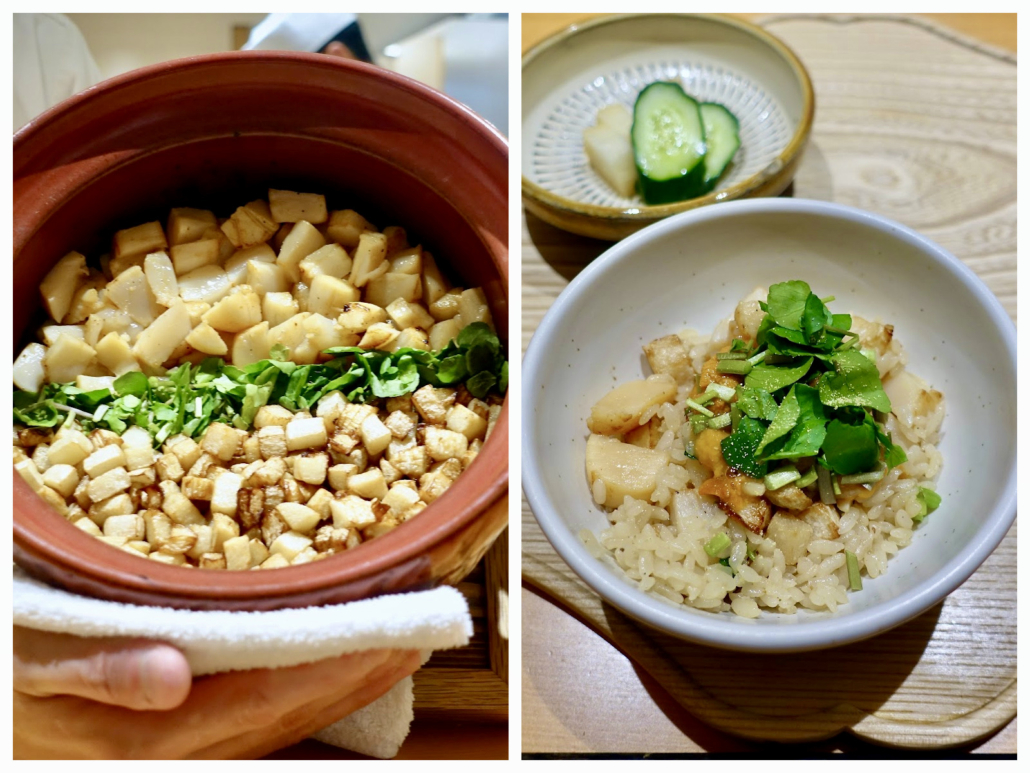
At the end of the meal, the guests got some of it formed into balls as goodie to eat it as snack the following day. The other dish “imported” from Japan is a special kind of salad, which is made of ten different kinds of vegetable in various preparations. As to the rest of the menu, Fujimoto Shoichi combines traditional recipes with innovative touches.
How was it?
I mentioned it, the dining room is minimalist. Friendly staff welcomed us and led us to our seats at the counter. Here already a printed menu awaited us. At the other side of the counter, there was order and calm. It did not make the impression of an upcoming meal. Once started, it became busier, yet everything was done in quietude and earnest. At first, only the sous chef was in charge, then the chef appeared and took over some parts of the happenings. In any case, it was fascinating to observe.
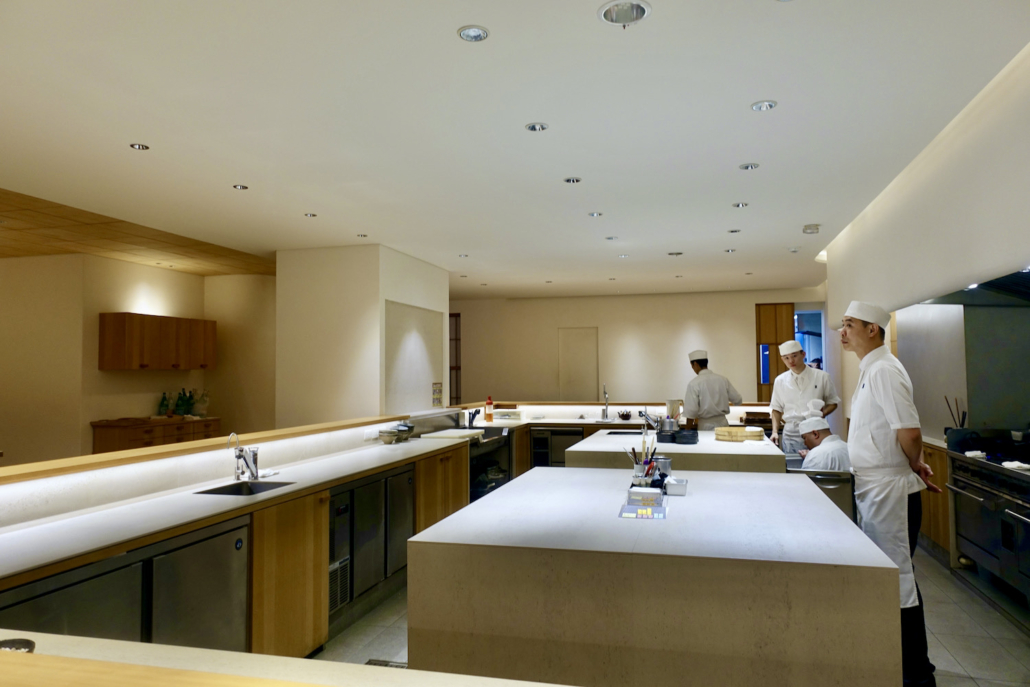
Staff was cordial and attentive throughout the evening. They also explained the dishes to us. When it was time for the rice upgrade, the sous chef showed the ingredients and the pot around. After dinner, the chef came to all the guests to hand over the above mentioned goodie and to exchange some words. It truly was a pleasant affair!
The food was excellent, a series of small, well-rounded dishes, all of which were convincing. And it was indeed a modernized version of a typical kaiseki meal. It was a somewhat “stripped down version” of it, without the garnishes being for style. The first three starters were all with seafood (squid, oyster, shrimp), then was sashimi, followed by a meat course, duck with onion, nest fern and black tea. Next were the mentioned salad,
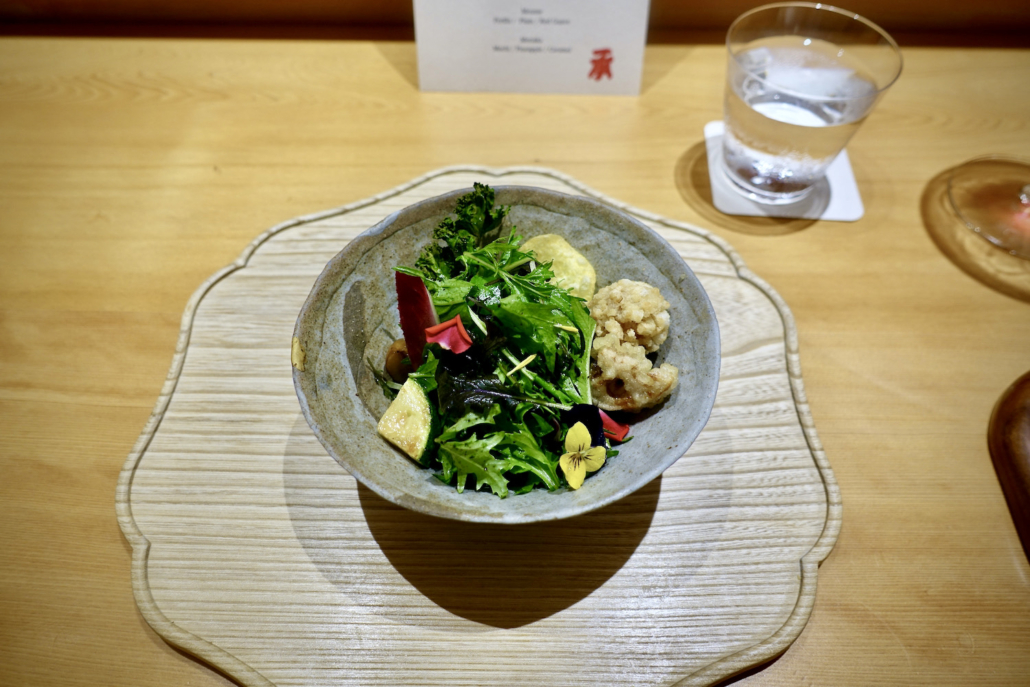
tile fish, the rice dishes I already went into and two desserts. The first was a mousse with perilla, plum and red guave. The second was a monaka. This sweet is made of azuki bean paste sandwiched between two wafers made from mochi. Here it came in combination with pineapple and caramel, delicious!
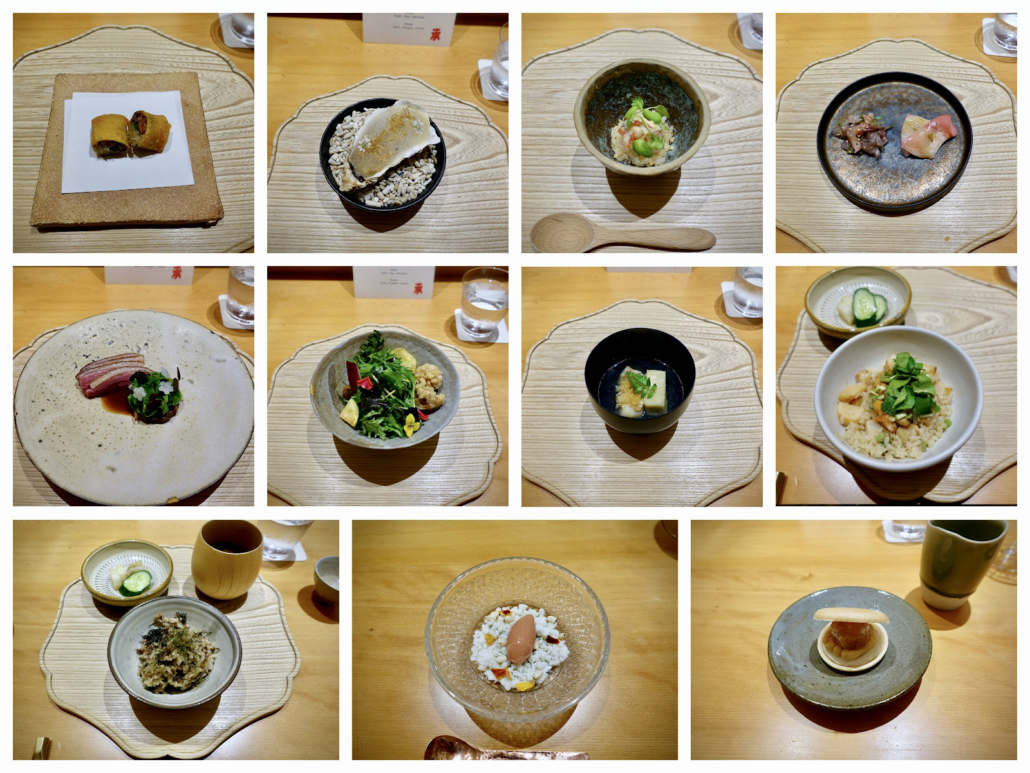
2. Restaurant KEN CAN by Ken Chan Sun Moon Lake
About
Restaurant KEN CAN by Ken Chan is the chef’s second restaurant on the island, and it is in the Sun Moon Lake area. It was opened in 2019, at Hotel Fleur de Chine.
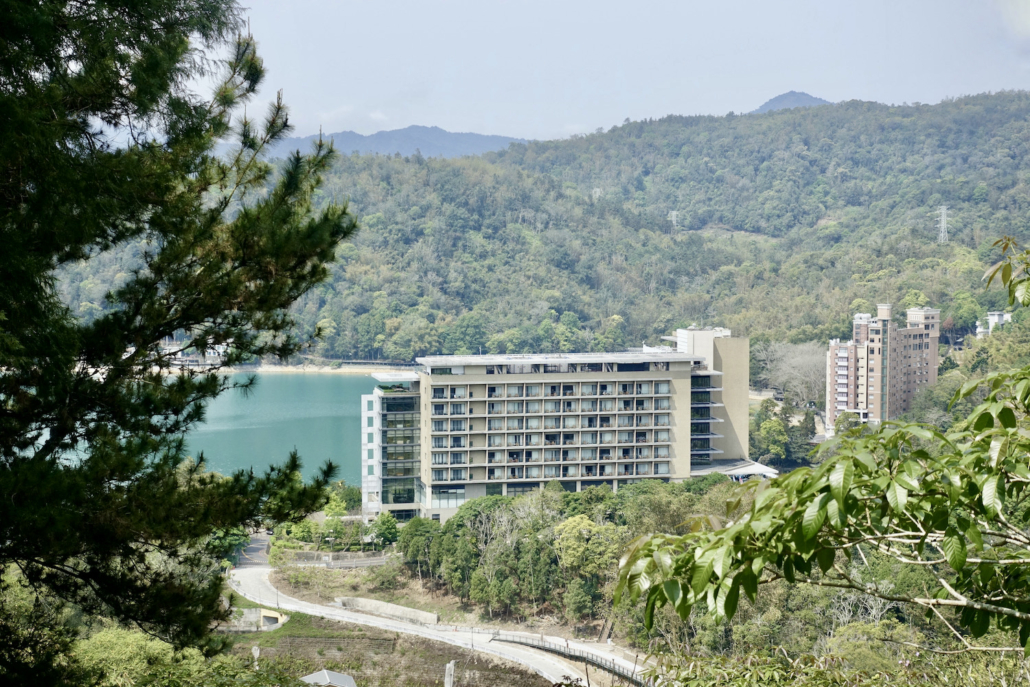
Ken Chan was the first and only chef awarded three Michelin stars in Taiwan, when the guide was first published in 2018. This was at Restaurant Le Palais at Hotel Palais de Chine in Taipei, and he still holds them.
Ken Chan made an extraordinary career. The Hong Kong born chef started with pushing a dim sum trolley around a restaurant from which guests did make their choice. And he did this after dropping out of school when he was twelve. At the age of 23, he began a new chapter in Taiwan. Here he climbed the career ladder, until he became head chef at a five-star hotel. In 2010, he got the position as executive chef at Restaurant Le Palais, which he still holds, now at the age of 58.
It still seems to be Ken Chan’s goal to reinvent himself. On offer at his restaurant is Cantonese cuisine as well as Sichuan, Fuzhou and Taiwanese ones. Signature dishes are Cantonese-style roast duck, Peking duck and gourd stuffed with shrimp and crabmeat. Dim sum also makes part of the menu. And braised fish maw, abalone with goose foot or bird’s nest soup are favorite – yet expensive – choices too. You get all this in opulent dining-rooms with French-meets-Oriental decor. Be advised that the dress code at Le Palais is strictly formal.
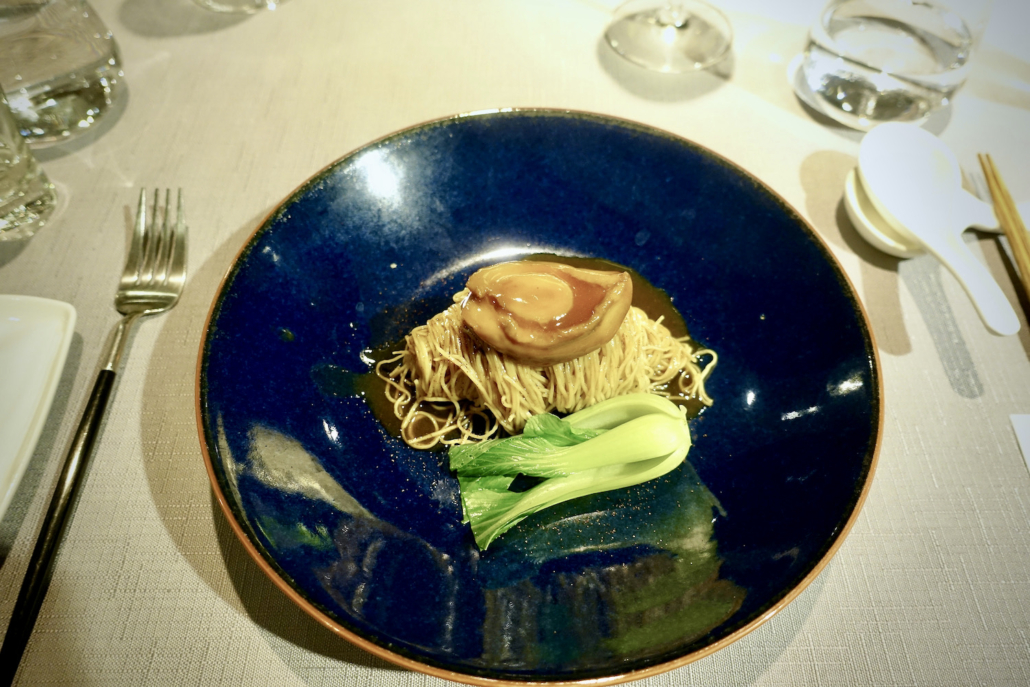
What to expect?
Dining at KEN CAN by Ken Chan at Hotel Fleur de Chine at the lakeshore of Sun Moon Lake is probably not comparable to the one at the three-star Michelin parent restaurant in Taipei – I have not been there. In the Sun Moon Lake area, all is simpler. There is one dining-room, which is not big. It is in a traditional, elegant style yet is no formal affair. A “smart casual” attire is sufficient.
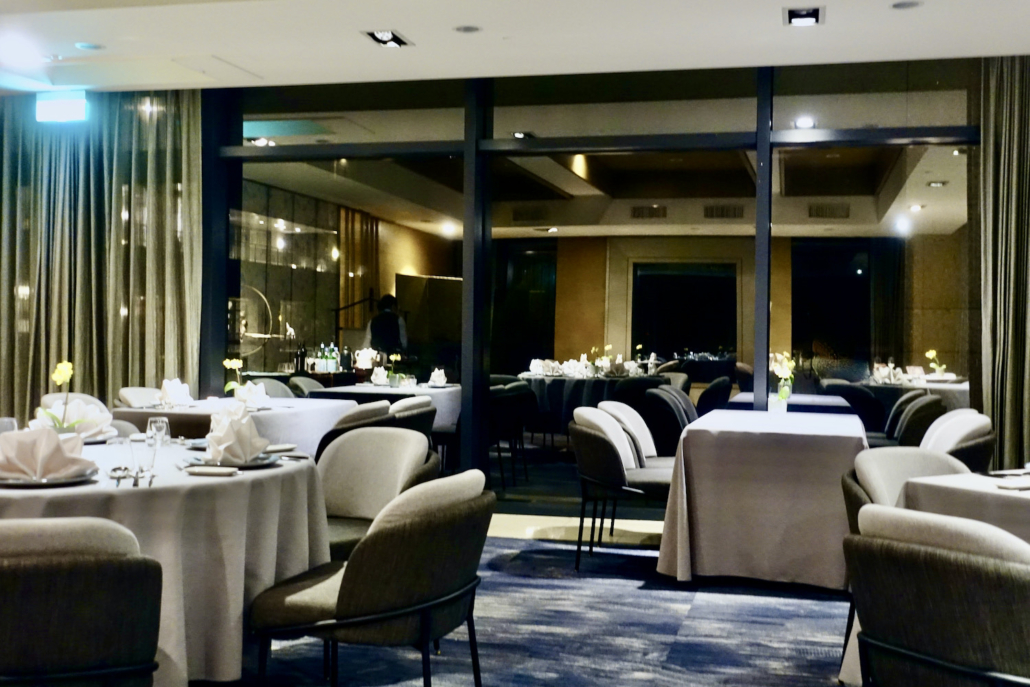
The menus are less expensive than in Taipei. You can choose one of three options that cost either 2,980, 3,980 or 5,980 TWA (83, 110 or 166 SFR/US$). And of course, Cantonese cuisine is on offer as in Taipei.
How was it at KEN CAN by Ken Chan?
On our arrival at the hotel reception, we were escorted to the premises, passing two other (casual) restaurants on the way. Only a few tables were occupied at the flagship spot (on a Friday evening end of March). The atmosphere was quiet, even somewhat relaxed. We had been contacted beforehand in order to enquire what menu we wanted (see above). And we had opted for the middle one. So, the printed menu was already laid out on the table. After some snacks, it was up to fish maw soup. It is a delicacy in China. In case you wonder about it, it is the inflatable swim bladder that most fish use to ascend and descend in water. It was mild in taste otherwise unremarkable – probably something for connoisseurs.
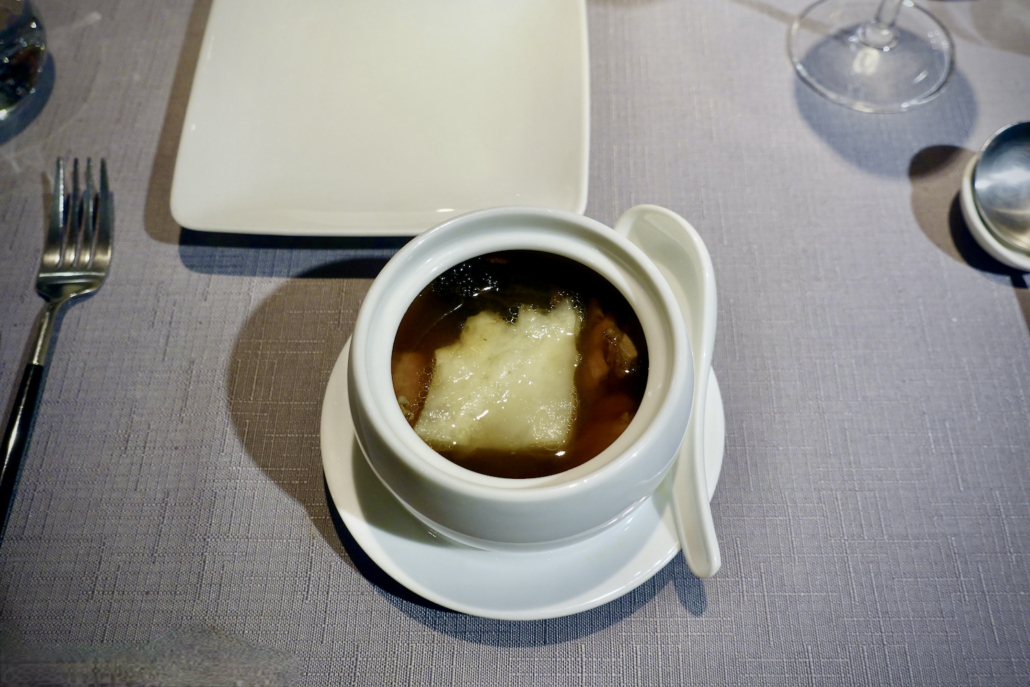
It went on with dishes that are somewhat unfamiliar to Westerners. While the lobster was something we knew and appreciated well, this was not the case as to the sauce. It was a mapo tofu one, a famous Sichuan staple where tofu pieces are braised in a rich, spicy sauce. Next was abalone, which we got to know a few years ago in Hong Kong. It was served on Low Mein (tossed noodles). And it was tender and tasty. I very much liked the next course, spinach, lettuce and tofu skin. The latter is the thin layer that forms at the top when you simmer fresh soy milk.

All in all, it was an interesting and authentic journey through Cantonese cuisine, an experience you cannot not make very often in Western Europe. Service was friendly, helpful and informative, we felt well at ease throughout the evening.
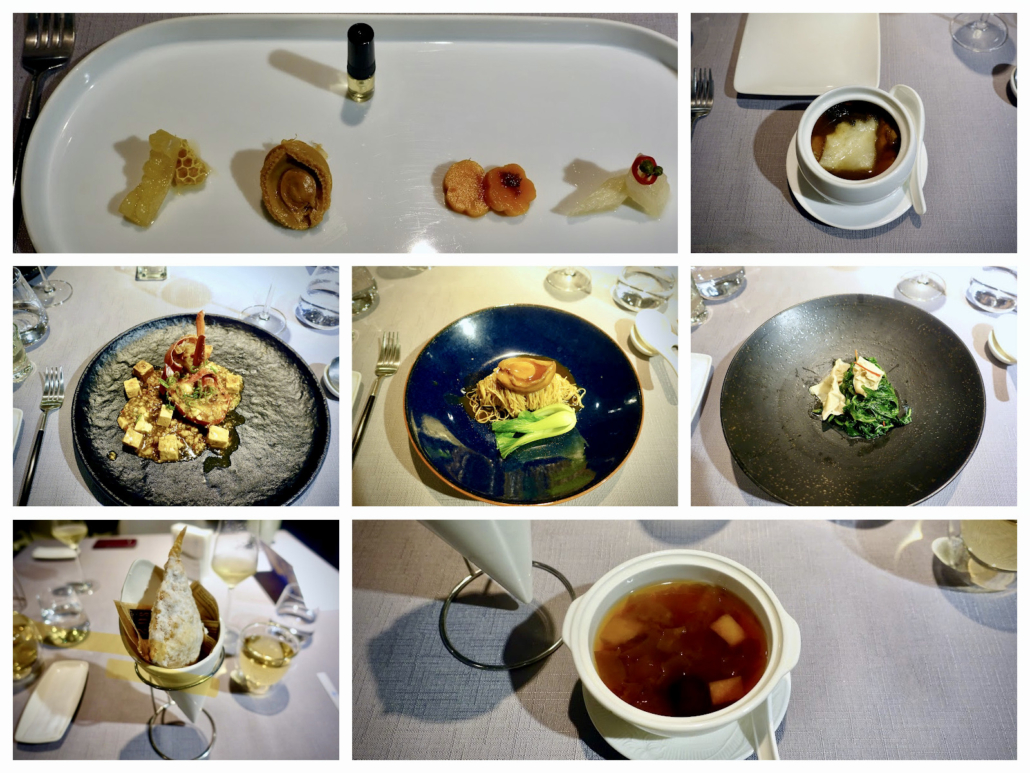
Looking back on my Taiwan journey
While this post focused on my three personal fine-dining highlights in Taiwan, you find on my blog some remarks about all the restaurants my husband and I dined on our 17-day journey. For this purpose, go for Taipei, Taroko and Sun Moon Lake to my one-week itinerary. As for Kenting, Kaohsiung and Beitou-Taipei refer to my two-week travel plan. Overall, I can assure you that – when traveling for food – , you get your money’s worth in Taiwan. While it is not always elaborate gourmet food when leaving the big cities, it was always good wherever we went.
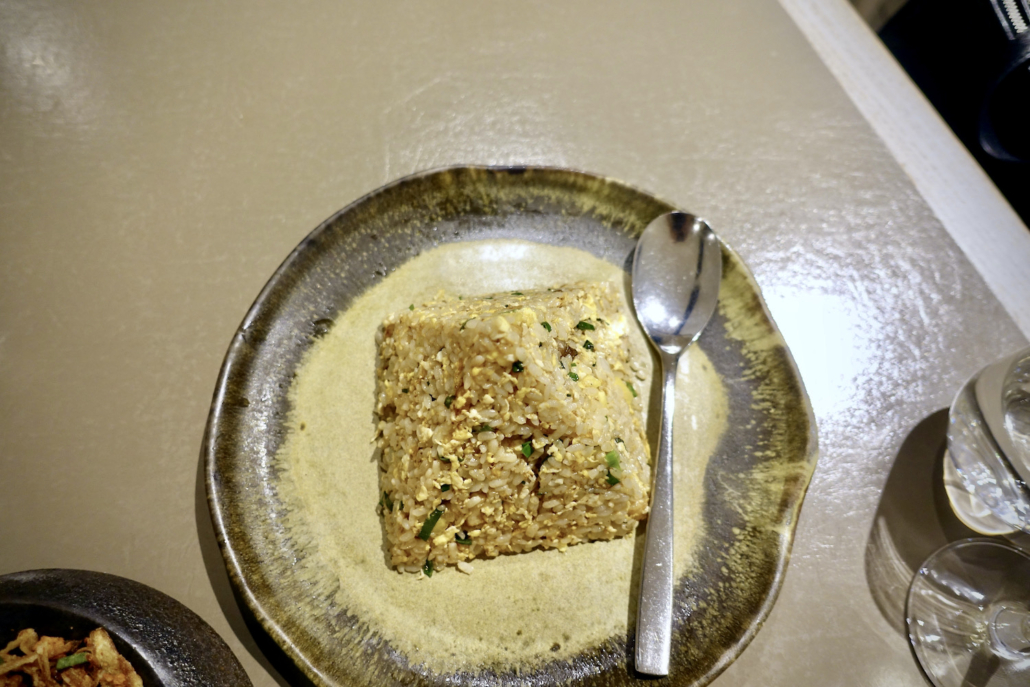
Besides this blogpost about recommended fine dining in Taiwan and the two mentioned itineraries, I also went into two other topics concerning this island. My very first post went into some considerations to make when planning a luxury trip to this country. And the post before the current one was about my favorite three luxury hotels here.
Date of stay: April 2024
Pin it for later
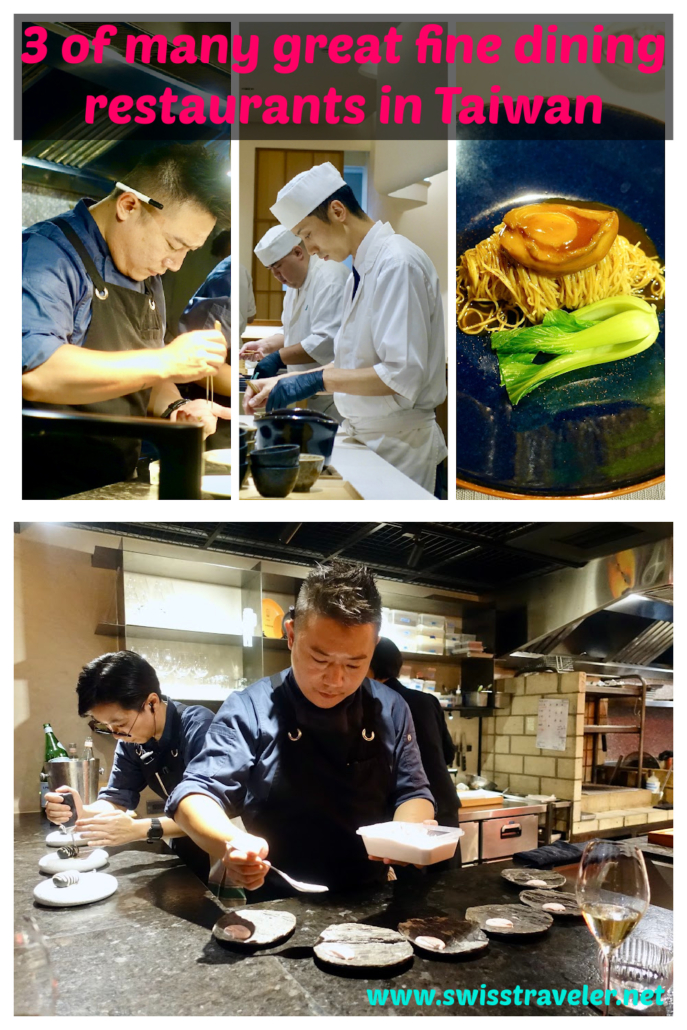
The post My personal fine-dining restaurant highlights in Taiwan first appeared on Swiss Traveler

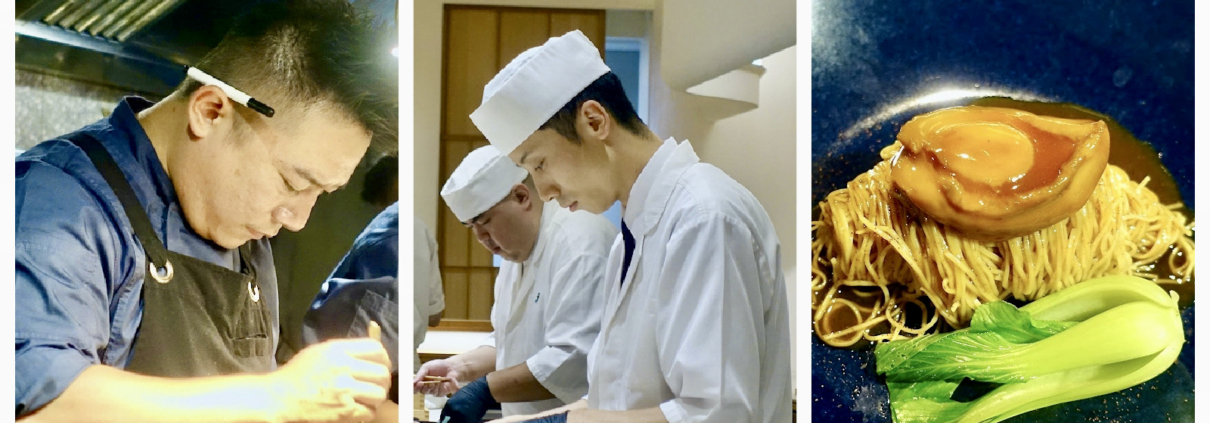


Leave a Reply
Want to join the discussion?Feel free to contribute!